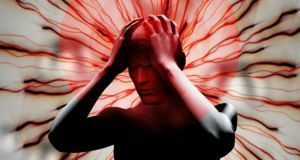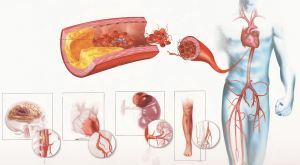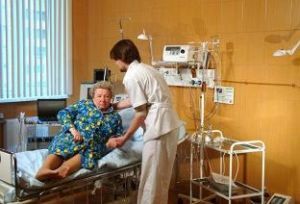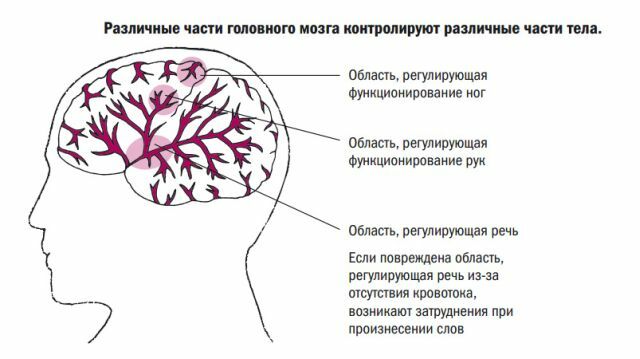 Diseases of the blood vessels and heart are currently most common among other pathologies. One of the most common such violations are infarction and stroke. The danger is that they often lead to death.
Diseases of the blood vessels and heart are currently most common among other pathologies. One of the most common such violations are infarction and stroke. The danger is that they often lead to death.
Diseases ceased to be of an "elderly" nature. This is due to the fact that they also affect people of middle and young age. Often people confuse the concepts of heart attack and stroke, despite the fact that the diseases have some similarities, they have differences from each other by some criteria.
Why was there confusion?
The confusion in concepts is due to the large number of similar signs of disease.
The similarity of diseases is manifested in the fact that they often infect older people who have a history of fractures, operations, as well as migrating blood clots, which at one point may lead to obstruction of the canal.
Diseases are often confused due to the fact that they have similar symptoms, consequences and even the place of localization. Also one concept is much wider than the other. This causes their similarity.
Because cerebral infarction is called a stroke. As a result of the disease, the brain cells are damaged in certain areas. If an infarct occurs in other body systems, it will not be considered a stroke.
The main difference between diseases
Diseases differ, primarily by the nature of the localization of the lesion. As a result of a heart attack, various organs of the human  are affected. The disease can be noted in the heart, liver, brain, intestines.
are affected. The disease can be noted in the heart, liver, brain, intestines.
When a stroke occurs, the area of spread narrows to the brain cells. Therefore, in stroke, the work of the human nervous system is disrupted.
Also the main difference is the etiology of diseases. In case of a heart attack, the entire organ or part of it is affected by thrombosis in the vessel. In the course of a stroke there is a rupture of the vessel, leading to hemorrhage, a violation of the circulatory system.
However, the differences in the diseases do not end there. Infarction and stroke differ in symptoms, methods of diagnosis and appropriate treatment.
Additional differences
With the development of diseases in the body there are various changes. It is on them you can determine what kind of disease struck the human body:
- As a result of a heart attack, the body's nutrition is broken and the tissues begin to die. If a person develops an acute attack of a stroke, the blood begins to go worse to the brain, which provokes a variety of tissue damage.
- In case of a heart attack, the nutrition of the organ is disturbed, and in case of stroke, the integrity of the tissues is due to malnutrition and hemorrhage.
- Stroke is a neurological disease. Infarction is considered a disease of the cardiovascular system.
- The concept of stroke is much broader than a heart attack. This is due to the fact that the stroke affects only the brain. With infarction, tissue necrosis can develop in any organ.
- Due to the breadth of the concept, stroke is caused by a large number of reasons. Among the causes of myocardial infarction, first of all, clogging the
 vessel.
vessel. - As the diseases have different directions, the therapy is carried out in different vectors. With strokes, treatment includes reducing blood viscosity, protecting the blood vessels in the brain and normalizing blood circulation. In case of a heart attack, nitrates, thrombolytics and anticoagulants are used.
- The result of a stroke is most often disability. At a heart attack, the risk of a fatal outcome is high.
Diseases differ also in symptomatology, characteristic manifestations at the initial stage of the onset:
- Localization of pain in stroke usually occurs in the head region. For a heart attack, the pain syndrome is characteristic in the region of the affected organ and heart.
- When a stroke occurs dizziness, unsteadiness of gait. Infarction is not characterized by such manifestations.
- With a heart attack, a person becomes very weak. In the event of a stroke, consciousness is instantly upset.
- The activity of a person with a heart attack increases due to intolerable pain in the affected organ. When a stroke occurs, it becomes difficult for a person to move due to numbness of the limbs or one of the sides of the body.
Similarity of diseases
In addition to the obvious differences in symptoms, the diseases are characterized by similar signs at the first stage of the lesion. Concepts are often confused due to the fact that stroke and heart attack are characterized by:
- appearance of pallor of the skin;
- with strong pain;
- possible loss of consciousness;
- by a sharp increase in blood pressure;
- impairment of respiratory function leading to suffocation;
- shortness of breath;
- severity and pressure in the chest.
Also often, both diseases are characterized by common causes of occurrence. These include: 
- disease, in which there is a narrowing of blood vessels( hypertension, diabetes, atherosclerosis, obesity);
- bad habits( smoking, drinking alcohol);
- improper diet( harmful foods, excessive intake of cholesterol);
- lack of physical activity;
- lack of diagnosis, which allows to identify the disease at an early stage;
- Systematic increase in blood pressure.
However, despite the obvious differences in treatment, with infarction and stroke shows the reception of drugs of general therapeutic orientation. These include medicines for:
- prevention and treatment of complications of a physical nature;
- providing airway patency;
- increased cardiac activity;
- eliminating bacterial damage while raising body temperature.
What is more dangerous: a heart attack or a stroke?
There is no single answer to this question, since both heart attack and stroke can lead to serious complications. In this case, in spite of the fact that a heart attack more often leads to death, a fatal outcome may occur due to a stroke.
Among the complications of the infarct, the following are distinguished:
- cardiac arrhythmias, occurrence of arrhythmia ( tachycardia, bradycardia, ciliary aritimia);
- insufficient functioning of the heart - decreased ability of the organ, affecting the formation of a stagnant condition of blood vessels, pulmonary edema, cardiac asthma;
- cardiogenic shock - the appearance of severe pain, a critical drop in blood pressure, a slowdown in cardiac activity;
- heart muscle rupture is a violation of the integrity of the heart muscle tissues during dying and wear, leading to a fatal outcome in 10% of patients.
In stroke, frequent consequences are a violation of the functioning of one of the brain areas or its death. Therefore, it is often violated precisely the area of vital activity for which this department was responsible. Among the complications are:
- paresis and paralysis of -reduction or cessation of motor activity in muscles( violation of swallowing, speech, walking, writing,
 motor skills);
motor skills); - pneumonia is the result of the patient's recumbency and the inflammatory process in the lungs;
- to whom is a condition characterized by a prolonged loss of consciousness, a lack of reaction to external stimulation;
- dementia of - impairment of a patient's intellectual abilities;
- memory loss ;
- pain syndrome , appearing in one of the halves of the body, arms, legs, numbness, tingling, loss of sensation.
Stroke and heart attack have a large number of similar and different symptoms. However, the main thing that unites them - an increased threat to human health and life.
In some cases, the onset of a lethal outcome is noted. Therefore, it is important to note the appearance of the first signs of diseases and immediately call an ambulance.



